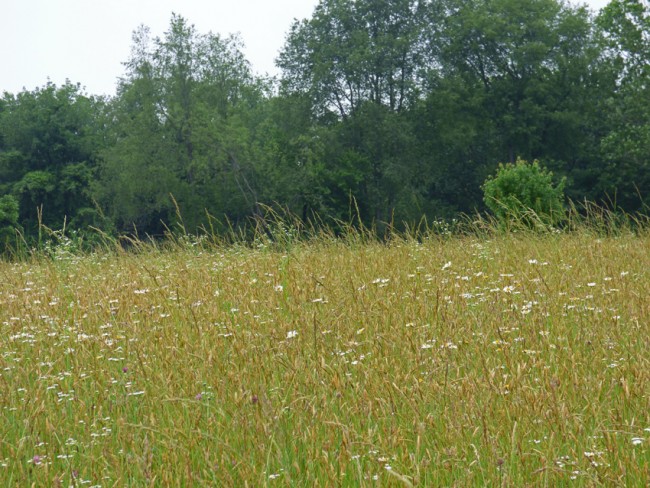
When people think of the Nature Preserve, I imagine that most of them picture the forest and frog pond first. We do love our trees, but the grasslands of Meadowlark Meadow provide important habitat to our wildlife as well as beautiful wildflowers. Several years ago, we received a grant from the Louisville Audubon Society and Toyota’s Together Green to turn previously mowed pastureland into a native grassland area. We planted several kinds of native grasses, such as little blue stem and Indian grass, along with seeds for native grasslands wildflowers. To a human being, grass is just something to be mowed, but when allowed to grow, grasslands provide vital living space for many species of plants and animals. A walk in the meadow will now show how successful that effort has been, so here are some of the species you can see right now.
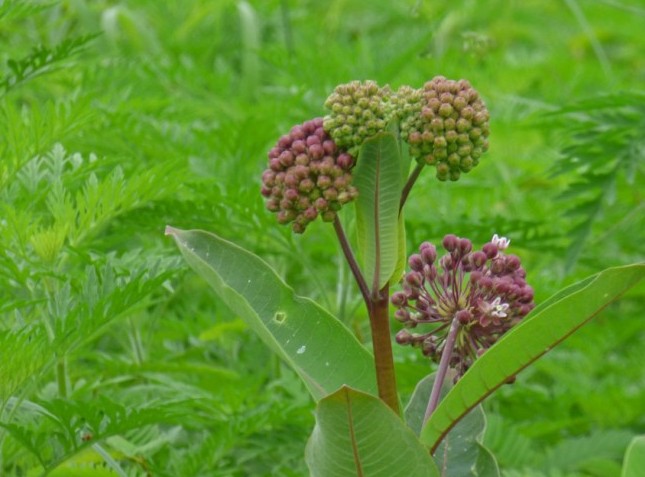
The early spring amazes us with its wildflowers, that bloom so quickly then die off as the leafy canopy of the trees reduce the amount of sunlight available to them. In a grasslands, however, the sun shines all day, every day, and a succession of wildflowers will grow all summer and fall. The common milkweed is ready to bloom, providing essential food and acting as the host plant for butterflies (especially Monarchs) to lay their eggs.
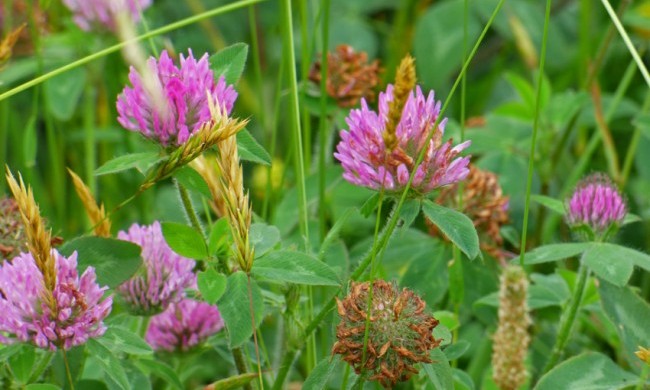
Red clover is a familiar plant that produces a sweet nectar for the bees and butterflies, while the flowers, leaves and young stems are edible. The flowers have been used in folk remedies for many years, treating whooping cough, bronchitis and other lung ailments. Watch for trails through the grass made by deer as they venture into the meadow to enjoy this clover and the young grasses.
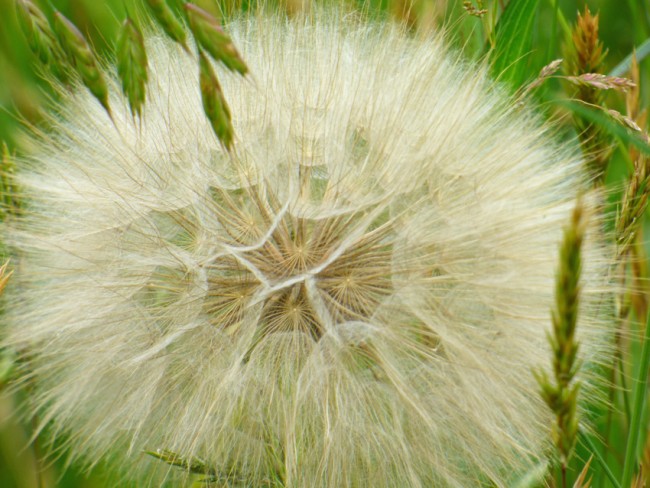
Seeing this giant fluff ball, you might think you’ve discovered the biggest dandelions in Oldham County! But they will be the windblown seeds of Yellow Goatsbeard, a plant introduced from Europe. Often, these “introduced” plants become invasive, taking over any area where they grow. But Goatsbeard seems to have better manners, and grows here and there in the meadow.
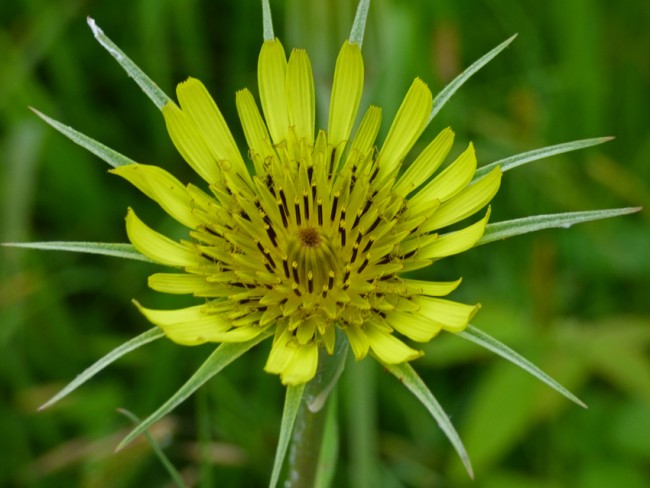
The flower itself has eye catching yellow rays, surrounded by long green bracts from the bud extending out beyond the rays. It is also known as Johnny-Go-To-Bed-At-Noon, and I wonder how in the world someone came up with it. The long taproots can be ground, roasted and used as a coffee substitute.
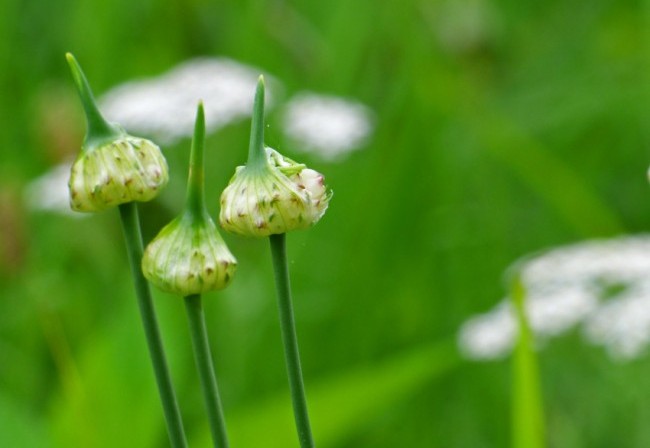
If you find a plant resembling the dome on a Russian Orthodox Church, get ready for a surprise.
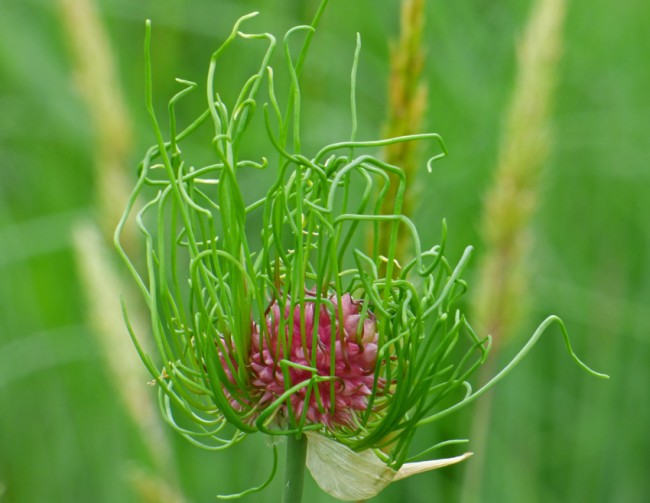
The papery cover on the bud breaks open, to display the flower of wild onion, which looks like a plant having a very bad hair day!
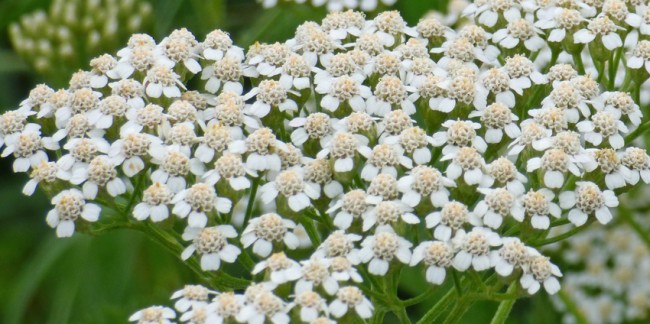
Yarrow has flat-topped clusters of white flowers with delicate ferny leaves. Its primary medicinal use was to stop bleeding, so it is sometimes referred to as Bloodwort, Deadman’s Daisy or Nosebleed Plant. It was thought to be particularly helpful when a wound was caused by iron, so in the Civil War the crushed plant was applied to bullet and shrapnel wounds.

Of course, we all love the sunny Oxeye Daisy, also introduced from Europe. You’ve heard of dandelion wine, but did you know that infusions of the petals and leaves from this daisy have been made into wine and medicine, and the dew collected from them was taken to promote longevity.

Driving along Harmony Landing Road in front of the Nature Preserve, you may notice a combination of white and purple flowers. The purple ones are Virginia Spiderwort and the white are Foxglove Beardtongue or Penstemon. Spiderwort best belongs in a big meadow where it can grow as much as it pleases. If planted in your yard, you will soon be looking for people to give it to! Please, take some time to appreciate the beautiful wildflowers growing in the meadow, and come back again soon, because they will be different each time!

